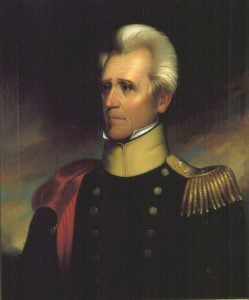A recent flurry of debate and discussion over the issue of women’s roles in The Church of Jesus Christ of Latter-day Saints has provoked exasperation and hurt on multiple fronts. Advocates for an expansion of women’s ecclesiastical authority and responsibility point to the underrepresentation of women in church leadership structures (here, and here). For instance, during the four main sessions of the church’s worldwide General Conference last weekend, only two out of twenty-eight sermons were delivered by women (7%). In the official graphic displaying portraits of the church’s top leadership, no women appear—not even the General Relief Society President, who is the head of the organization comprising all women in the church worldwide.
On the other hand, others within the church argue that there is no need for an expansion of Mormon women’s stewardship because the work that Mormon women do in their homes is more important than any other ecclesiastical teaching or leadership role (here). To some, advocacy for women’s expanded roles seems like a refutation of the validity of women’s existing roles within the church. “I feel like the women whom God has called to teach and lead the church are already doing so and are doing a great job of it,” said one member of my family whom I love and respect. “They’re doing it in their own homes every day. That’s where the real work happens.”
I do not currently advocate for women’s ordination to the priesthood, although I have many wonderful, faithful Latter-day Saint friends who take this position. If the Prophet were to announce today that women could receive the priesthood, my reaction would be: “Seriously!? Awesome!” For the present, however, and throughout the discussion below, I focus on positive and meaningful changes to women’s roles within The Church of Jesus Christ of Latter-day Saints that can be accomplished within the current paradigm of male priesthood.
We need the increased presence of the voices, talents, and examples of women within the global church leadership. By “global church leadership,” I mean the group of leaders who have the authority to lead and teach men and women in the entire church, whose words represent official church doctrine as promulgated in Conference talks, the Ensign and other official church periodicals, and curriculum manuals. The church term for such leaders, who include Apostles, members of the Quorums of the Seventy, and members of the Sunday School Presidency, is an easy shorthand: “General Authorities.” These are the individuals who have recognized authority to lead and teach the worldwide church membership.
By one measure, the nine women who head the women’s, young women’s, and children’s organizations in the church might be considered members of the global church leadership because -two of these women are assigned to address the church at General Conference as “General Officers” of the church. However, outside this setting women’s leadership roles are nearly always confined to the spheres of women and children. The General Relief Society, Young Women’s, and Primary Presidencies are called to lead and teach the women, young women, and children of the church, but not the entire church membership. The General Relief Society President and General Young Women’s President speak regularly at their organizations’ general meetings, but do not speak regularly at General Conference. Hence, while Latter-day Saint women serve in local, stake, and general auxiliary callings throughout the world, the presence of women in global-level church leadership with the authority to lead and teach the entire church is quite small, especially when compared to the hundreds of men from around the world who are called to the various Quorums of the Seventy.
The Church urgently needs more women within the global church leadership who are called to lead, teach, and inspire Latter-day Saint men and women around the world.
Here I would like to acknowledge a basic assumption that thankfully may seem obvious to many readers: the current position within The Church of Jesus Christ of Latter-day Saints is that men and women are equals. This has not always been the case within the Church historically.[1] The equality of men and women is also not the prevailing cultural view in many places where the Church exists around the world. However, none of the Church’s General Authorities today would go on record saying that women are intrinsically less capable, intelligent, spiritual, or valued as members of the Church than men. Similarly, it would sound absurd to argue that only men are fit to serve full-time missions, or that only men may give talks in sacrament meeting, or that only men are qualified to teach the gospel to young men and young women.
So why can’t women just teach and lead in their families, or within existing callings in the church such as missionaries, sacrament meeting speakers, or Sunday School teachers? Why is there a need for women in the global church leadership?
Without a doubt, the work of converting children to the gospel is much more important than nearly any other sort of leading and teaching that we do in the church. We believe that it is a “sacred duty” for parents to “[raise] children in love and righteousness” and that in raising their children, “fathers and mothers are obligated to help one another as equal partners.”[3] When I look back on my childhood I realize that my mother and father were constantly teaching us the gospel: at bedtime, at Family Home Evening, while gazing at the stars during a camping trip, while stir-frying green beans for dinner. Compared to the eighteen years that I was under my parents’—and especially my mother’s—constant influence, the time that I spent listening to General Conference talks and even sitting in Sunday School counts for almost nothing.
Since the Mormon family is by far the most effective setting for teaching the gospel, why do we even bother with global leadership in the first place? Let’s take Elder Dieter F. Uchtdorf, second counselor to the Prophet, as an example. Born in Czechoslovakia and baptized as a Mormon convert with his family as a young child, Elder Uchtdorf fled East Germany, lived as a poor refugee in a one-bedroom apartment infested with mice, and eventually became chief pilot and an airline executive at Lufthansa (see biographical article here). In Germany, Elder Uchtdorf and his wife Harriet raised their two children, Antje and Guido, in the gospel. Now Antje and Guido both have three children: Daniel, Patrick, and Eric (Antje’s), and Jasmin, Robin, and Niklas Ivan (Guido’s). All of these children and grandchildren are active in the Church. Elder and Sister Uchtdorf’s influence will continue for generations.
And yet, even though Elder Uchtdorf has been a leader and a teacher in his family and within his home ward, it is not just his children and the members of his ward who benefit from his insight, life experience, empathy, and closeness to the Spirit. Because he occupies a position within the church’s worldwide leadership, his voice is broadcast to the entire church at General Conference and his words will make their way into sacrament talks, lessons, and church members’ popular understanding.
It took a week’s delay before the Conference broadcast came to Hong Kong, where I live, but this past weekend I heard Elder Uchtdorf give his Saturday morning session talk entitled “Come Join With Us.” In this sermon, Elder Uchtdorf’s intellect, empathy, and cultural authority as a non-North American whose family converted to Mormonism all came together to enable him to ask and answer a difficult yet extremely relevant question: “If the gospel is so wonderful, then why would anybody leave?” (here)
Elder Uchtdorf’s candid, confident, groundbreaking discussion of this topic, including the memorable words, “to be perfectly frank, there have been times when members or leaders in the Church have simply made mistakes,” spread rapidly through social media and news websites. Thanks to Elder Uchtdorf’s calling in the global church leadership, possibly millions of church members, including myself, were able to benefit from his insight and interpretation just as if we had been lucky enough to be members of his family or home ward.
Where are the female Elder Uchtdorfs in the Church—women whose unique life experiences, diverse perspective, and faith in Jesus Christ have prepared them to teach others with the compassion and empathy that invites the Spirit? Without a doubt, such women currently exist within the membership of the Church. You and I may be lucky enough to interact with them as members of our families or home wards. And yet these gifts have yet to be put to work on behalf of the entire church in the sphere of global church leadership.
One objection that might immediately come to mind is that were women to occupy the same dual spheres of family and global church leadership that Elder Uchtdorf, Seventies, and other male leaders currently occupy, their families would suffer. This is a possibility, but only to the extent that the families of Elder Uchtdorf, Seventies, and other General Authorities can be considered to “suffer” as a result of their fathers’ service. Having to juggle the demands of family and church callings is a sacrifice for men as well as for women, since men and women are equal partners in their family responsibilities. The most obvious “sitting ducks” for women global church leaders would be mature women who no longer have children at home, just as male General Authorities are frequently called from the ranks of late-career and retired men. Hundreds of older women and men already serve in the Church full time as senior missionaries, which service is considered not a burden but a blessing to their families (here). But younger women could also be called. Callings themselves could be structured so as to fully tap a leader’s talents and abilities while leaving room for balance in her life. Such structuring would be optimally done in counsel with other women leaders.
To say that we need more women in global church leadership is not to accuse global church leadership of being incompetent or unrighteous. It is to respond to a real and growing need. As Elder Uchtdorf acknowledged in his talk, the Church is not perfect because it is run by imperfect people. We must all work together despite our imperfections to solve the problems before us. One of these problems is this widely acknowledged problem of large-scale defection from the church (here) [4], especially young women and single women who leave because they perceive that the Church does not have anything to offer bright, ambitious, capable women (see one perspective on this problem here).
Here are three reasons why we need a robust women’s presence within global church leadership:
First, a more natural balance of men and women in the Church’s worldwide leadership would bless men and women within the entire church with a diversity of perspectives. In his Saturday morning session talk, Elder Uchtdorf declared, “The diversity of persons and peoples all around the globe is a strength of this Church.” This need for “diversity” is not merely cosmetic (i.e., filling quotas for different nationalities and the cultures for the sake of good appearances) but spiritually fundamental. Church teachings that gender is an eternal characteristic are the basis for arguments that children should ideally be taught and nurtured by a man and a woman. The same reasoning would suggest that members of the global church should ideally be taught and spiritually nurtured by both men and women. The dearth of women at the highest, most visible levels of church teaching is not ideal.
Second, global church leadership of the Church provides a key focal point for common Latter-day Saint identity worldwide and should thus include women, for whom gender may be the most significant marker of identity. The recent noticeable increase in General Conference speakers from countries including Brazil, Zimbabwe, France, and Mexico evidences church leaders’ recognition that a diversity of speakers makes a statement about common identity and unity as a single global church. This global identity and unity is not to be taken for granted. In my branch in Hong Kong, in which the majority of members are single, middle-aged women converts from mainland China, the General Conference meeting is not as well-attended as a normal meeting. I suspect that this is because these Chinese women converts have a hard time identifying with the global church organization, especially when Conference messages come through a translator and are usually delivered by North American men who all look about the same to them and whose names are very difficult to remember.[5]
At one large church meeting in Hong Kong (not a General Conference, but a District Conference at which General Authorities spoke) I noticed that a group of branch women sitting together in front of me were having a hard time giving their undivided attention to the talks, which were being delivered by various visiting General Authorities. Then “Sister Dai”—a woman who is universally admired within the branch as a Primary President, visiting teacher, and Supermom—stepped up to the podium. The women broke out in exclamations of “Hey! It’s our Sister Dai!” and snapped to attention. I am not trying to argue that people should not learn how to pay attention in church, or that church members will only pay attention to talks given by people they know personally. But observing the difference that the messenger—not just the message—makes in people’s ability to be engaged was instructive. When my fellow branch members saw someone with whom they identified (with whom they had something significant in common and who was also known to them through long acquaintance), they were more receptive to the message that was being taught and more engaged in the conference itself. The same is true for the young women and single women that the Church is struggling to retain. To help women within the Church deepen their connection and commitment to the kingdom of God, the kingdom of God needs more women leaders.
Third, while Church members who have been raised in stalwart Mormon families, surrounded by strong and faithful mothers, sisters, and wives, may see no need for “additional” female leadership at the global level, large numbers of church members who are converts may not have encountered such outstanding female spiritual exemplars. Since local church congregations vary in their size and stability, global church leadership should be like a storehouse of good examples to ensure that the church experience of Latter-day Saints around the world is filled with the presence of strong, faithful women whose lives and personalities teach us how to be better. One can never have too many great examples. Not just converts, but everyone, especially the young women, would benefit from being familiar with the female personalities within the global church leadership. For example, Elder Uchtdorf is a great spiritual exemplar, but there are limitations in his ability to be a role model to women. It is true that the General Relief Society presidency fulfills this spiritual exemplar and role model function to a certain extent at regular General Relief Society meetings. However, in many places in the world where the church members are scattered over a wide geographic area, with long distances to travel to church and no internet access, it is simply not possible to view or attend “extra” meetings beyond one session of General Conference that is broadcast on Sunday in place of a normal sacrament meeting. Outstanding female spiritual exemplars and role models must populate the ranks of the church’s leaders in our most visible and public settings.
Female spiritual exemplars within global church leadership will make a difference not just for women, but for men as well. This is especially apparent when we consider that in many of the regions of the world where church growth is most rapid, women are often widely viewed as inferior to men within local culture. My parents-in-law administer a church mission in the Democratic Republic of Congo and report that on occasion their male missionaries have expressed the sincere view that women are intellectually inferior. My father-in-law cites the recent church policy of establishing a female leadership structure within missions as helping to refute these deeply ingrained cultural assumptions, shared by both men and women, about women’s inferiority. In a similar manner, the presence of women within the global church leadership who act as spiritual authorities to lead and teach both women and men within the Church would be a powerful step in establishing what Elder Dallin H. Oaks has referred to as a “gospel culture” that recognizes the divine worth and potential of all God’s children (here).
These three needs (gender diversity in leaders’ spiritual perspectives, female leadership as a point of global commonality, and female spiritual exemplars and role models) are real, and can all be met within the current paradigm of male priesthood. Within Mormon temples, female temple workers are invested with authority to perform initiatory ordinances while male temple workers use the priesthood to perform the same ordinances. In other words, when circumstances necessitate, jobs that are usually done through standard chains of male priesthood authority may also be done by women who have been set apart to do so. Many reorganizations of church ministerial, ritual, and administrative responsibilities have occurred in our history. Major revelations or changes of policy in the Church have always been linked to people taking the initiative to pursue the question in the first place (on this topic, see a list of thought-provoking questions here). We see this pattern of problem-solving in the Book of Mormon story of the Brother of Jared, who saw a problem, thought of a potential solution, and took it to the Lord for approval.
Ultimately, the Lord is in charge, directing the church in response to leaders’ prayerful consideration and seeking. Below are some possible solutions, which do not represent a platform of demands, but rather an exploration of a range of approaches from the most obvious to the more speculative.
One way to increase women’s presence within global church leadership would be to increase the female speakers at General Conference beyond the current two out of twenty-eight. If the General Relief Society President, General Young Women’s President, and General Primary President spoke in each session of conference instead of just occasionally, members of the church would get to know them better. This greater familiarity would help church members in the audience take the message to heart (because they love and trust the messenger) and recall the message later (“Oh yes, the last time Sister Oscarson spoke, she told the story about her great-grandmother Isabelle . . .”). Elder Robert D. Hales stated in his recent talk on General Conference that the conference messages “are always under the direction of the Lord,” and that speakers receive the messages that the Lord wants delivered through a process of fasting, study, and prayer (here). With the Lord’s direction, I do not see that assigning more women leaders to speak in General Conference would negatively affect the messages delivered to the Church in any way.
Another way to invest in women’s global leadership would be to call women to longer church assignments. Historically, the General Relief Society President calling was a lifetime calling. While I can’t think of anyone in their right mind who would want a lifetime calling, if the General Relief Society, Young Women’s, and Primary Presidents were around for longer, this would also give them the opportunity to be better known within the global church. It would allow them more time to mature in their callings. They would draw upon increasingly deep wells of understanding of the Church’s organization and people.
Women could serve in assignments throughout the world like Seventies and Area Authority Seventies. In contrast to the women of the General Presidencies of Relief Society, Young Women, and Primary who must of necessity live in Utah, these area leaders could be leaders and role models for women within a common regional cultural context. Collectively, they would form a resource pool of broad and deep experience that could be drawn upon wherever needed to lessen the administrative and ministerial burdens of stake presidents and bishops. Perhaps these women could take over the assignment of giving talks on stake-assigned topics in local sacrament meetings. They could be called to anchor long-term church humanitarian commitments in a community or region. Talented leaders with the ability to motivate and inspire could be assigned wherever they are needed, with terms like Seventies (i.e. “Seventy until you’re seventy”). With a longer tenure for their call, women leaders—Sixty-Nines? Seventy-Ones?—would also be a presence within the global Church long enough so that they would not just be “known” through General Conference alone, but through regional conferences, on curriculum committees, at temple dedications, and in media coverage.
Since language ability is such an essential qualification for an effective mission president and since the number of missionaries and missions has dramatically expanded, women with needed language abilities could be called as mission presidents. Their husbands, even if they did not speak the language, could be called as co-mission presidents and assigned to administer all priesthood functions during the couple’s term of service.
Of course, no one, woman or man, “wants” to be called to a position of global responsibility within the Church, which involves not only blessings but also stressful work and significant sacrifices. At the same time, as Elder Uchtdorf said on Saturday, “We see assignments not as burdens but as opportunities to fulfill covenants we gladly make to serve God and His children.” Although I do not personally possess the spiritual gifts, strength of character, and natural leadership ability that would make someone an effective leader within the global Church of Jesus Christ of Latter-day Saints, I know women who do. I dearly hope that we can find ways for inspired women to be a leading and teaching presence within my life and the lives of my daughter, sons, husband, and church community.
A few months ago I heard a former member of the Young Women’s General Board give a presentation on “Defending Traditional Marriage” to a combined Relief Society and Priesthood meeting in her ward in Spanish Fork, Utah. She faced a tough audience composed of “very conservative” Spanish Fork locals and “very liberal” graduate student visitors, all Latter-day Saints. Given the politically controversial nature of the topic of traditional marriage versus same-sex marriage, the odds that she would be able to get through the presentation without angering or offending at least one segment of the audience were low. And yet, through a rare combination of vulnerability (telling a personal story about a physical trial during her young adulthood that had made her feel like she didn’t fit into God’s plan), gospel insight, and, most of all, a spirit of love cultivated through years of selfless service, her message invited the Spirit. This Spirit spoke to the hearts of listeners in that diverse audience, including my own. I thought: “If only everyone in the Church could have heard this talk!”
In conclusion, the harvest is great and the laborers are few, but this staffing shortage can be easily addressed on at least one front—by calling more inspired women to positions of leadership in which they can lift and help the entire membership of the Church. As members of the Church, let us follow the recent counsel of Elder Edward Dube, who emphasized the need for “teamwork” in building God’s kingdom and urged us to “tap into our full potential.” Let us continue to enlarge the space for discussion and prayerful consideration of how, like the faithful servant in the parable of the talents,[6] women’s capacities to lead and teach the Church can be multiplied and the resulting increase returned to the Lord who gave them.
[1] Especially during the early years in Utah, doctrine and rhetoric emphasized the patriarchal nature of the family and the superiority of men. Just a few months before the first Saints left for the West, Brigham Young in Winter Quarters told his family meeting, “The man is the head & God of the woman.” Erastus Snow made the same point in 1857 when he declared that women should “reverence her husband as her lord; for he is her lord.” Kathryn Daynes, More Wives Than One: Transformation of the Mormon Marriage System 1840-1910, 115.
[2] If anything, when I hear popular Mormon assumptions about gender and spirituality, I hear assertions such as “women are more in tune with the Spirit” or “there are more righteous women than men in the Church.” The recent popularity of a video clip in which Sheri Dew (here) extols the activity and influence of Mormon women in response to a journalist’s question about whether she felt “oppressed” demonstrates church members’ eagerness to assert that women are not second-class citizens within Mormon doctrine, practice, and organization, but equals.
[3] The Church of Jesus Christ of Latter-day Saints, Proclamation on the Family, 1995.
[4] See also Chadwick, Bruce, Brent L. Top, and Richard J. McClendon. The Shield of Faith: The Power of Religion in the Lives of LDS Youth and Young Adults. Deseret Book, 2010. 33.
[5] The current practice is for Church leaders’ names to be transliterated into Chinese characters. Each Chinese character can itself be a “word,” which means that to a Chinese person, a transliterated foreign name is actually like several names. Hence “President Thomas S. Monson” is 多馬*孟蓀會長 (Mengsun Duoma Huizhang), which means that every time a Chinese person says the name of the President of the Church she has to say “President Many-Horse Meng-Grass.” This is not as bad, however, as the name for Gordon B. Hinckley, 興格萊戈登(Xinggelai Gedeng, or “Excited-Box-Weed Spear-Climb).
[6] Matthew 25:14-30.











